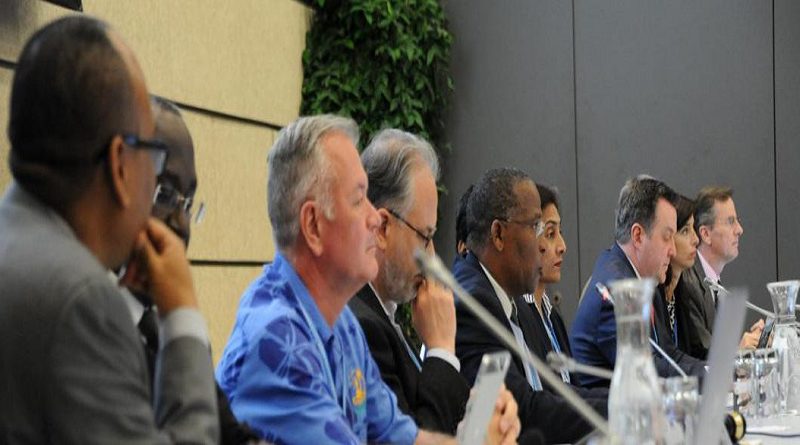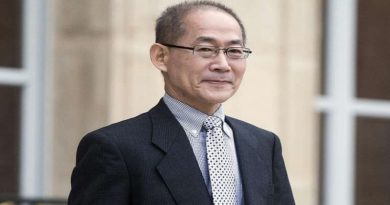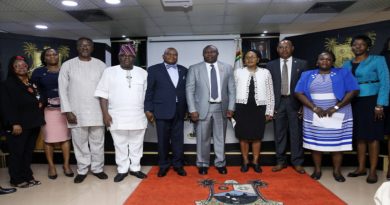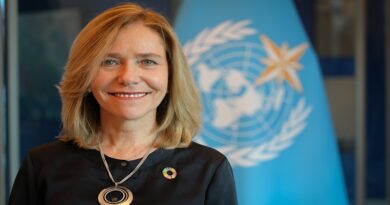Circular Economies 2.0: Experts highlight innovation, best practice
In conjunction with the Bonn Climate Change Conference 2018 that ended last week, experts from around the world gathered in Bonn to champion the benefits of circular economies.
Having come a long way from its theoretical inception in the 1960s, circular economies are now being implemented with ever greater success by front-running government ministries, businesses, NGOs and international organisations.
Experts convened to share their innovative approaches, lessons learned and tangible benefits for the climate and sustainable development. Aligned with the year-long Talanoa Dialogue around ambition before and after 2020, the expert gathering helped to boost climate action before 2020 in concrete terms.
“This meeting plays a crucial role to boost climate action before 2020 by informing and inspiring countries about the currently available solutions and best practices on waste-to-energy and supply chain re-design”, said Mr. Emmanuel Dlamini, chair of the subsidiary body for implementation in his opening remarks.
He asked the experts and participants to ponder ways forward and necessary actions to be taken by countries, cities, businesses, and organizations to replicate and upscale identified innovative approaches.
A “circular economy” is an alternative to a traditional linear economy (make, use and dispose). It aims to use resources as long as possible, extract the maximum value from them and recover and regenerate materials at the end.
Supply chain redesign solutions are integral parts to achieving circular economies and the associated triple benefits: economic, environmental and employment.
As part of the so-called Technical Expert Meetings on Mitigation (TEMs-M), experts eagerly engaged and showcased their achievements in implementing circular economies.
A number of experts presented innovative technologies for waste-to-energy solutions and associated challenges.
Mr. Le Viet Vinh from Viet Hien Coffee Processing Machinery, Vietnam explained the pyrolysis-flox technology, which is very useful and efficient for turning agricultural waste (such as rice husks, coffee husks, maize spindles, and cashew shells) into clean heat energy and biochar, a natural soil enhancer.
Mr. Heinz J. Sturm from International Clean Energy Partnership Foundation Climate Technology Center (ICEPS CTC) Bonn, presented an emerging hydrogen fuel cell technology, in which biomass waste can be used to generate hydrogen fuel for various uses.
Ms. María José Gonzalez from Biovalor Project, Uruguay gave an example from two pilot projects of how slaughterhouse’s waste from 500 cows is powering a biogas plant to meet the energy demand of the nearby community. However, technological innovation also comes with some barriers. “One of the barriers is that this kind of project has high investment risks for the size of our producers. Also, there is still a lack of knowledge about technologies,” she said.
Ms. Jenitha Badul, a representative from Department of Environmental Affairs, South Africa explained that “…the initial investments for waste-to-energy solutions are quite high, but the return is fast. A balanced package of supportive legal framework, political leadership and an incubation fund for start-ups through public and private investment could spur such solutions.”
Re-designing supply chain to achieve circularity
Ms. Ines dos Santos Costa from Ministry of Environment Portugal told the gathering of the ministry’s important public outreach initiative on circular economies. “We are focusing on raising awareness to inspire the public and companies about the circularity. Our means are a website, roadshows and workshops to showcase the best examples of companies, products, and projects in implementing a circular economy. We also have a funding program to provide start-up investment and support”.
It is also interesting to see what the private sector is doing for circular economies and how it is working with the governments for circular economy to be adopted in the supply chain. As cited by Mr. Stefan Henningsson from WWF Sweden, Agriprotein in South Africa is reusing organic waste protein to replace fish and soy meal in animal feedstock.
In doing so, they reduced emissions by 23 million tons of CO2 per year by 2014. This initiative prevents burden on marine life, land use, transport and landfill, and CO2 are saved in feedstock sourcing. Another initiative comes from Bamboo Winding Pipelines in China where bamboo is used to replace nonrenewable material, such as steel, concrete, and plastic. Thus, 63 million tons of CO2 avoided.
Ms. Preeti Srivasta, Director Corporate Climate Action of Ecofys said, “Industries are creating circular economy initiatives right now. But the private sector by itself will not be able to make a systemic change for the circular economy. Therefore, it is important to start engage with the suppliers and redesigning the supply chain.”
Enhanced innovation and collaboration needed to upscale and replicate identified solutions
Sira Saccani from Climate-KIC suggested to harness the potential of digital innovation in fostering circular economy activities. She gave an example of Pendula Resource Management from Germany, in which they enable companies and recyclers to easily organize, track, and then review recycling operations online using real-time data and analytics.
Mr. Alois P. Mhlanga from United Nations Industrial Development Organization said “There is a huge potential for innovation and business models to be scaled up. It is critical to create easy access to financing for entrepreneurs and innovation start-ups, coupled with capacity building support.”
Minister Inia Seruiratu, the high-level champion said, “The multi-stakeholders’ cooperation is needed to unlock high mitigation potential opportunities, including sustainable development benefits. The enhanced partnership and engagement amongst policy makers, industries, cities, regional and local organizations, civil societies can create an inclusive business model for waste-to-energy and supply chain redesign.”
He also added that the Technical Expert Meetings are very important vehicles to take a deep dive into the specific policies and opportunities with high mitigation potential that are both actionable in the short-term and align with the long-term goals of Paris Agreement.




